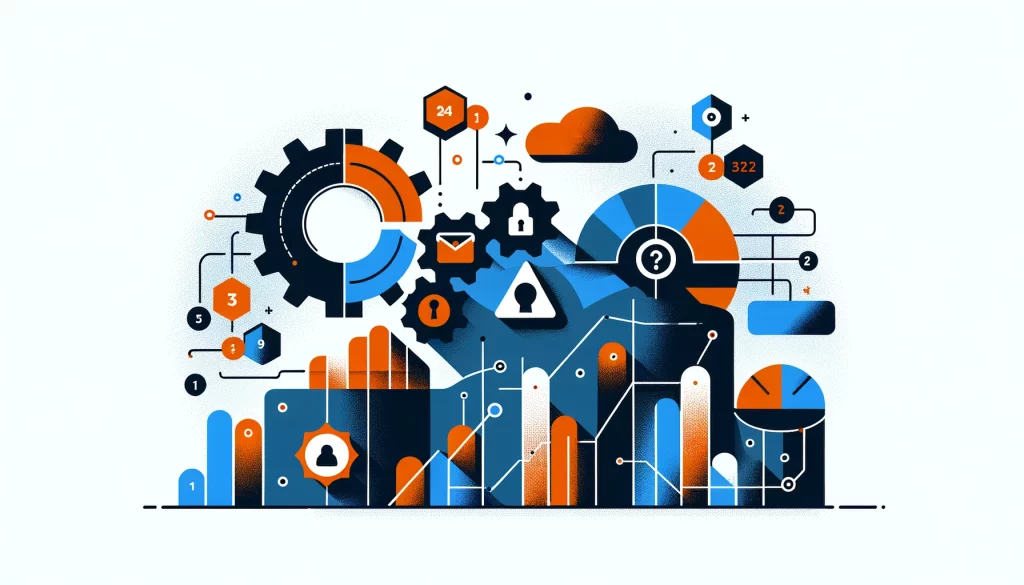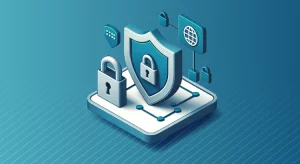
Differential Privacy

Differential privacy is a useful way to analyze data without risking confidentiality. It allows organizations to use data while keeping individuals’ information confidential.
In this article, we’ll explore the concept of differential privacy, its benefits, and its real-world applications.
Definition of Differential Privacy
Differential privacy is a mathematical framework that enables organizations to analyze data without compromising the privacy of individual records. It adds random noise to the data to make it hard to identify individuals from the analysis results.
The noise is adjusted to maintain the main patterns and insights in the data. This helps to hide the specific details of each record. This approach allows organizations to gain valuable insights from data while maintaining the confidentiality of personal information.
The Importance of Privacy Protection
In the era of big data, privacy protection has become a critical concern for individuals and organizations alike. As more personal data is collected and shared online, the risks of data breaches and identity theft have increased.
Moreover, the misuse of personal data can have serious consequences, ranging from targeted advertising and discrimination to more nefarious activities like stalking and harassment.
More people want strong privacy protection to reduce risks and keep public trust in data systems.
How Differential Privacy Works
Differential privacy is based on the concept of a privacy budget. This budget restricts the amount of information that can be disclosed about an individual through data analysis.
The differential system is a crucial component in ensuring the protection of sensitive data. When an analyst asks for data, the system uses a complicated formula to check how it might affect privacy. This algorithm looks at things like what data is asked for, how private it is, and the dangers of sharing it.
One important job of the system is to check if the requested data fits within the privacy limit. This budget is essentially a limit on the amount of privacy that can be compromised in any given analysis. By keeping a close eye on the budget, the system can make sure that people’s privacy is protected.
Overall, the differential privacy system plays a critical role in balancing the need for data access with the imperative to protect individual privacy. The system uses advanced algorithms and privacy controls to protect sensitive information and ensure data analysis is done responsibly and ethically.
If the request is approved, the system will retrieve the necessary data from the database. It will then introduce some noise to the data. Finally, the system will return the altered results to the analyst.
This process ensures that individual privacy is protected while still allowing for meaningful data analysis.
The Role of Noise in Differential Privacy
A big challenge in using differential privacy is figuring out how much noise to add to the data. Too much noise can render the data useless for analysis, while too little noise may not provide sufficient privacy protection.
Differential privacy tools are important for data privacy. They help share sensitive information while keeping individuals’ privacy safe. The Laplace mechanism and the Gaussian mechanism are two commonly used methods for achieving this.
The Laplace mechanism adds noise to the data by drawing from a Laplace distribution, which is characterized by heavy tails that allow for a higher level of privacy protection. This noise is added in a way that ensures that the overall utility of the data is not significantly compromised, while still providing a strong level of privacy protection.
The Gaussian mechanism adds noise to data by using a bell-shaped curve from a Gaussian distribution. This sound is adjusted to find a good balance between protecting privacy and keeping data useful for analysis. It ensures data is still helpful while also keeping privacy high.
Overall, these mechanisms play a crucial role in ensuring that sensitive data can be shared and analyzed without compromising the privacy of individuals. These mechanisms create probability distributions that add noise strategically. This helps protect privacy in the era of big data. It minimizes the impact on data utility while maximizing privacy protection.
These mechanisms take into account different factors. These factors include the sensitivity of the data. They also consider the level of privacy required. Additionally, they consider the type of analysis being conducted.
Real-World Applications
Differential privacy has already been adopted by several major technology companies to protect user privacy. Apple uses differential privacy in iOS and macOS to collect data and improve products without compromising privacy.
Google employs differential privacy in its Chrome browser to gather aggregated usage statistics while keeping individual user data confidential. The U.S. Census Bureau is using it too to keep personal information safe in the 2020 Census.
Comparing Differential Privacy and Other Privacy-Preserving Techniques
While differential privacy is a powerful tool for protecting individual privacy, it is not the only approach available. Other techniques, such as K-anonymity and secure multi-party computation, have been used to safeguard personal data in various contexts.
K-anonymity disguises data to appear similar to other records. Secure multi-party computation allows parties to collaborate on a task without revealing their private information.
Yet, these methods have drawbacks. Differential privacy is a promising option with solid math guarantees and adaptability, standing out for its effectiveness.
The Benefits of Differential Privacy
Differential privacy is a framework that enables organizations to analyze and utilize sensitive data without compromising the privacy of individuals. It helps protect individual privacy by adding noise or randomness to data before analyzing it. This prevents specific data points from being re-identified. This helps organizations analyze their data and follow privacy rules to keep their customers and stakeholders’ trust.
One of the key benefits of differential privacy for organizations is the ability to unlock the full potential of their data without fear of privacy breaches. By implementing differential privacy techniques, organizations can confidently share and analyze data without the risk of exposing sensitive information about individuals. This not only helps organizations make better decisions based on data-driven insights, but also fosters a culture of transparency and accountability.
Furthermore, differential privacy can also help organizations build stronger relationships with their customers and stakeholders. By using differential privacy techniques, organizations can show they care about protecting privacy. This can help them build trust and a good reputation with people who share their data. This can lead to increased customer loyalty, improved brand perception, and ultimately, a competitive advantage in the marketplace.
Differential privacy helps organizations use data effectively while protecting individuals’ privacy. Organizations can reduce privacy risks and build trust by focusing on privacy and using differential privacy techniques. This will help establish transparency for long-term success.
By protecting individual privacy, organizations can avoid the reputational damage and legal liabilities that can result from data breaches and misuse.
Differential privacy ensures that personal information remains protected when shared or used for analysis. Individuals can have peace of mind knowing that their data won’t be exposed or misused.
Challenges and Limitations
While differential privacy is a powerful tool for protecting privacy, it is not a silver bullet. Implementing this can be challenging, particularly for large and complex datasets. More noise in the data can make the results less accurate and useful, especially for smaller or less common groups.
Differential privacy does not protect against all privacy attacks. Inference attacks can use outside information to figure out sensitive details about people.
To protect privacy, it is important to use differential privacy along with other measures. These measures include minimizing data, controlling access, and securely storing and transmitting information.
The Future of Differential Privacy
As data grows, the need for strong privacy protection like differential privacy will also grow.
Researchers and experts are working to make differential privacy techniques more efficient, scalable, and user-friendly. This will make them easier to use for a variety of applications.
Interest in creating privacy solutions for new technologies like machine learning and blockchain is increasing. These technologies present both challenges and opportunities for privacy protection.
The Role of Regulation and Standardization
As more people use differential privacy, rules and standards are needed to make sure it is used correctly in all areas.
Governments and industry groups are making rules and recommendations for using it. They are also establishing standards for measuring and reporting on privacy protection.
Creating a standard for privacy will build trust, transparency, and protect privacy rights in systems.
The Importance of User Education and Awareness
While differential privacy is good for protecting data, it’s still important to educate and raise awareness among users. People need to understand the importance of their personal information. They should also be aware of the risks of sharing it online. Additionally, they should know how to protect their privacy.
Organizations must be clear about how they use and protect user data. One method to safeguard personal privacy and ensure accurate analysis is by using differential privacy. This technique involves adding random noise to the data. Companies can demonstrate care for user data and build trust by explaining their use of the techniques.
Transparency and user empowerment are key components in building trust with customers. When users are informed about how their data is being handled and have control over their privacy settings, they are more likely to feel comfortable sharing their information with the organization. Trust is crucial for a fair and sustainable data system. Users should feel confident that their data is being used in a responsible and ethical manner.
Organizations that prioritize transparency, empowering users, and protecting data through techniques like differential privacy can build stronger relationships with customers. This approach also helps in creating a trustworthy and fair data environment. By upholding these principles, organizations can not only protect user privacy but also foster a culture of accountability and responsibility in the digital age.
Conclusion
Differential privacy is a new technology that lets us use data without compromising people’s privacy. By introducing controlled noise into data analysis, it allows organizations to gain insights and drive innovation without compromising the confidentiality of personal information.
Implementing differential privacy is difficult because it involves considering factors like data collection methods, algorithms, and privacy parameters. There are limits to how accurate and useful the data can be when using differential privacy techniques.
However, despite these challenges, the benefits of implementing differential privacy are significant. By using it, organizations can provide stronger protection for individuals’ privacy, ensuring that sensitive information remains confidential and secure. This can help increase trust in the organization and its data practices. People will feel more confident that their data is being handled responsibly.
Furthermore, implementing it can contribute to a more sustainable and equitable data ecosystem. By prioritizing privacy protection, organizations can create a more ethical and transparent data environment, where individuals have greater control over their personal information. This can lead to more equitable outcomes for all stakeholders, as data is used in a responsible and ethical manner.
Overall, while there may be challenges and limitations to implementing differential privacy, the benefits of doing so are clear. By prioritizing privacy protection, organizations can build trust, promote sustainability, and create a more equitable data ecosystem for all.
